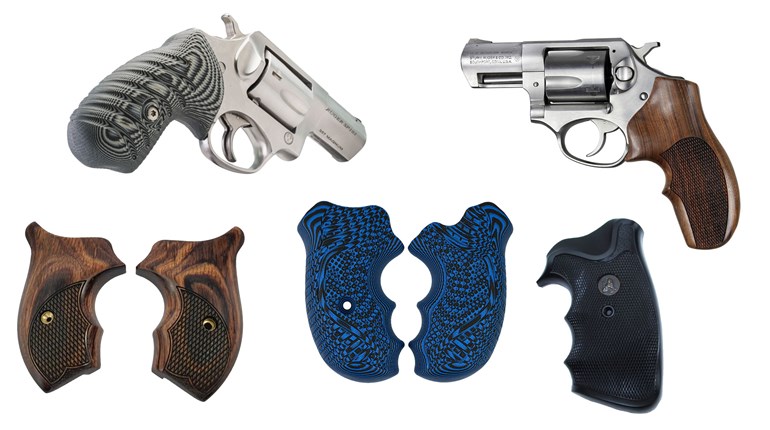
The number of aftermarket accoutrements available for a firearm is a good yardstick by which to measure its popularity. My count of more than 50 different AR pistol grip designs shows strong evidence of this platform's meteoric rise in ownership. Between testing rifles and building ARs for customers, I get to try many of the common choices for this piece of "guniture." Equipping your AR with aftermarket grips is a simple and relatively inexpensive way to provide a somewhat custom fit.
The AR was developed at a time when most rifles and carbines on this side of the Atlantic still used one-piece, wooden pistol grip stocks. While it probably felt strange to American GIs switching over from M1 Carbines and M14s, the AR grip's ergonomic design was not new. Many famous firearms such as the Thompson submachine gun and several WWII-era German designs used similar grip-to-receiver angles for the same reason it's endured more than five decades of AR service: It is conducive to effective combat shooting. The AR grip is most natural in-hand when shooting upright (standing, kneeling, etc.), but is likewise well suited for prone work and patrol-type activities. Traditional stock designs lack in one or more of these areas, but thanks to Eugene Stoner, today's ARs are pretty darn comfortable guns.
When considering grip options, the good news is that there are many to choose from. Unfortunately, that's also the bad news, as deciding on just one can be tough. I've noticed some crowd favorites while building custom guns. The most often requested grips are Hogue Overmold, Falcon Industries Ergo Grips and Tango Down Battlegrips. Magpul's Mission Adaptable Grip (MIAD) and the Mako AG43 are other order-form regulars. These grips all have one thing in common: They preserve the natural angle while providing more effective gripping surfaces. Upgrades in materials, textures, humps and grooves all allow steady holds when hands are sweaty, cold, gloved or busy with multiple tasks. Most modern tactical grips provide trapdoor storage for one or two optic, laser or flashlight batteries. I use the old-school technique of placing 100 mph tape across the bottom to retain spares within my uncapped grips.
If you can turn a screwdriver, you can change a pistol grip. Ensure you don't lose the selector detent (it looks like a stubby nail inside of the lower receiver) or the detent spring (held in the top edge of the pistol grip) as you remove the existing grip. Large-receiver ARs (.308 Win., etc.) have two different detents and springs, so pay attention to their placement.
Put all of these small items back in their proper holes when installing the replacement grip, taking care not to kink the spring. The selector detent must have proper tension in order to allow positive control of the selector. Too light, and the firearm may end up on "Fire" accidently. Too heavy, and you'll need a cheater bar to move the selector in either direction. The usual culprit when there is a problem is an improperly aligned spring in the newly installed grip.
If the spring hole in the top of the grip doesn't line up with the detent hole in the receiver, either exchange it for a new one or use a small drill or rotary tool on the grip to correct the alignment. Place a small drop of oil on the selector detent's point before inserting it into the lower receiver to further aid selector lever rotation.
Some grips come with their own specially sized grip screws. Always use these screws, as they are usually made to the proper length for that specific grip. Use a lock washer and snug the screw, but don't over tighten it. Going too far will strip the threaded portion of the lower receiver, or worse, break off the screw inside. Both conditions can be fixed by a gunsmith, but not without additional expense.
I spent an entire military career using nothing more than standard A1- and A2-style grips on my M16s, M4s and SR25s. Nowadays, I build my own rifles and take full advantage of the AR's über-customizable nature. A very comfortable and useful grip can be had for $25 to $40, making the aftermarket AR grip one of the least expensive and easiest items to upgrade.
I recommend going to a gun show or shop to hold ARs with different grips so you'll have a better idea of what is most comfortable to you when shouldering the rifle or carbine. Find the design that feels good, but that also allows easy manipulation of the selector and trigger without changing your grip. Then, order the one you like best and have a go at tailoring the fit of your firearm.




































